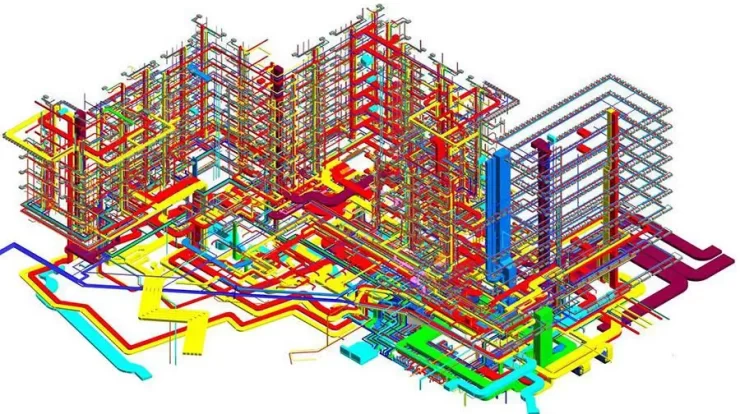Exploring 3D BIM in Architecture and Construction
Building Information Modeling (BIM) has transformed the architecture, engineering, and construction (AEC) industry, streamlining workflows and enhancing collaboration. Among the various aspects of BIM, 3D modeling stands out as a pivotal component that brings designs to life in unprecedented ways. In this blog, we’ll delve into what 3D BIM is, its benefits, and how it is reshaping the landscape of construction and design.
What is 3D BIM?
3D BIM refers to the creation and management of three dimensional digital models that represent the physical and functional characteristics of a building. Unlike traditional 2D drawings, 3D BIM allows stakeholders to visualize a project in three dimensions, making it easier to understand spatial relationships, material choices, and overall design intent.
Key Components of 3D BIM:
- Geometric Representation: 3D BIM captures the geometry of a building, including walls, roofs, windows, and doors. This detailed representation helps in visualizing the project accurately.
- Data Integration: Beyond geometry, 3D BIM integrates a wealth of data, including specifications, material properties, and performance metrics. This data driven approach enhances decision making throughout the project lifecycle.
- Collaboration: 3D models serve as a central hub for collaboration among architects, engineers, contractors, and clients. All stakeholders can access and interact with the same model, fostering better communication and reducing errors.
Benefits of 3D BIM
1. Enhanced Visualization
One of the most significant advantages of 3D BIM is its ability to provide realistic visualizations of a project before construction begins. Stakeholders can explore the model from various angles, making it easier to identify design flaws, assess spatial relationships, and make informed decisions.
2. Improved Coordination
In complex projects, multiple disciplines must work together seamlessly. 3D BIM enables better coordination between architectural, structural, and MEP (mechanical, electrical, and plumbing) teams by providing a unified model that highlights potential clashes and inconsistencies. This proactive approach minimizes rework and delays during construction.
3. Streamlined Communication
3D models serve as a universal language in the AEC industry. Instead of relying on technical jargon or 2D drawings that can be misinterpreted, stakeholders can visually communicate ideas and changes, ensuring everyone is on the same page.
4. Increased Efficiency
The automation of various processes through 3D BIM significantly boosts efficiency. Tasks such as quantity takeoffs, cost estimations, and scheduling can be completed more quickly and accurately, leading to better project timelines and reduced costs.
5. Lifecycle Management
3D BIM models are not just useful during the design and construction phases; they also play a critical role in facility management. Once a building is completed, the BIM model can be used for maintenance, renovations, and operational management, ensuring that valuable data is retained throughout the building’s lifecycle.
The Impact of 3D BIM on the Industry
1. Sustainability and Energy Efficiency
With the ability to analyze building performance, 3D BIM contributes to more sustainable design practices. Architects can simulate energy usage, assess daylighting, and evaluate HVAC systems, leading to optimized designs that minimize environmental impact.
2. Virtual Reality (VR) and Augmented Reality (AR)
The integration of VR and AR with 3D BIM is revolutionizing how projects are presented to clients and stakeholders. Immersive experiences allow users to walk through virtual models, providing a deeper understanding of the design and enhancing client engagement.
3. Enhanced Client Experience
Clients increasingly expect to be involved in the design process. 3D BIM allows them to visualize their projects and provide feedback early in the process, ensuring their needs and preferences are met.
Conclusion
3D BIM is not just a trend; it’s a fundamental shift in how the architecture and construction industries operate. By enhancing visualization, improving collaboration, and streamlining communication, 3D BIM has become an indispensable tool for modern design and construction projects. As technology continues to evolve, the potential applications of 3D BIM will only expand, further transforming the built environment.
Embracing 3D BIM can lead to more efficient workflows, reduced costs, and improved project outcomes. For architects, engineers, and construction professionals, investing in this innovative approach is key to staying competitive in an ever evolving industry. The future of construction is here, and it’s three dimensional.

